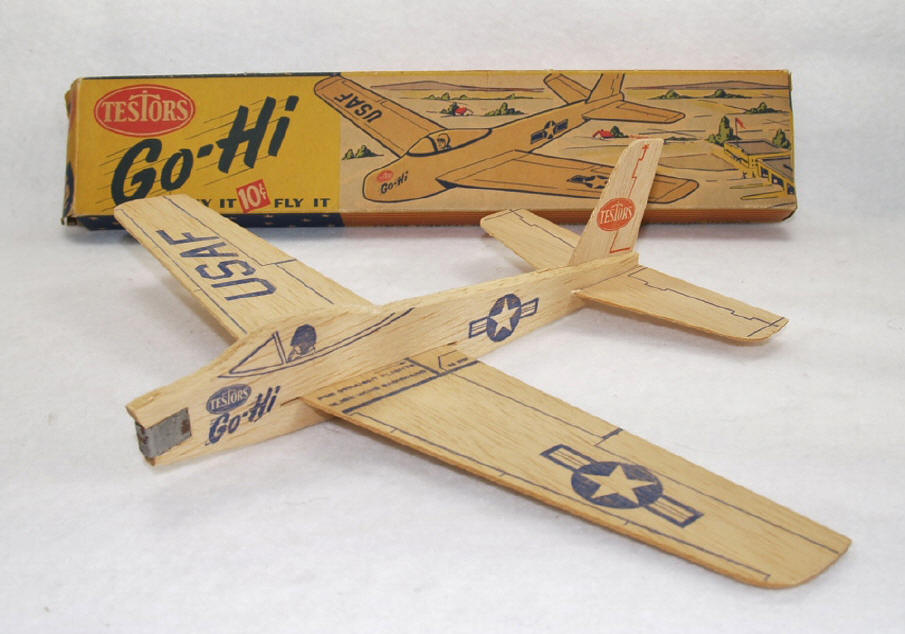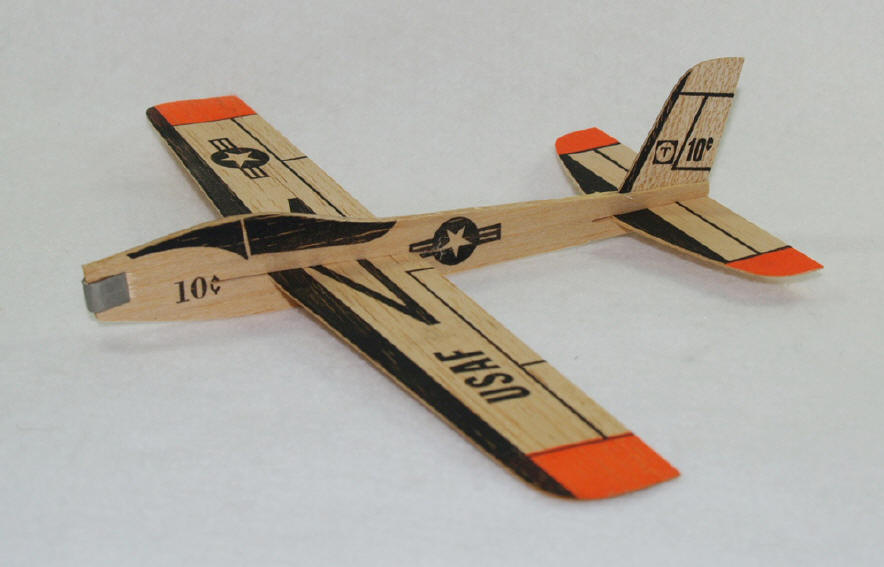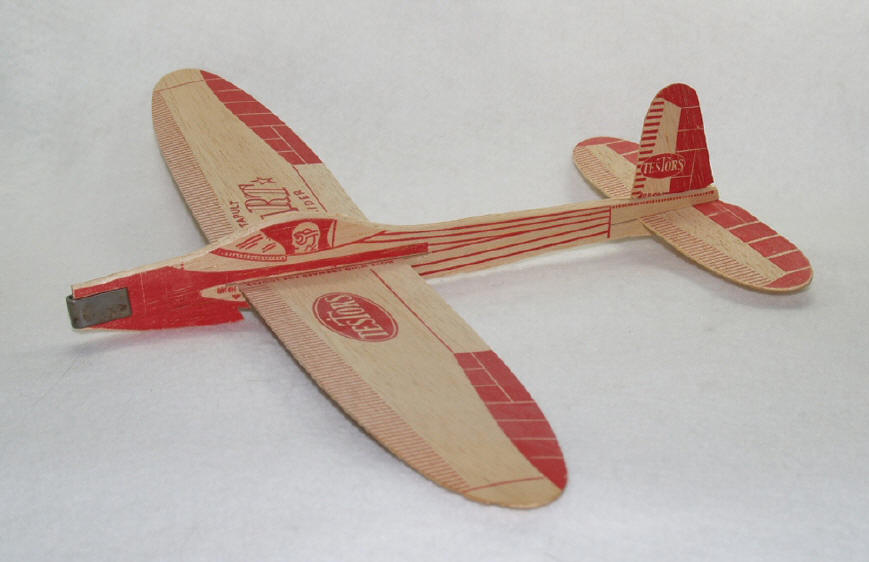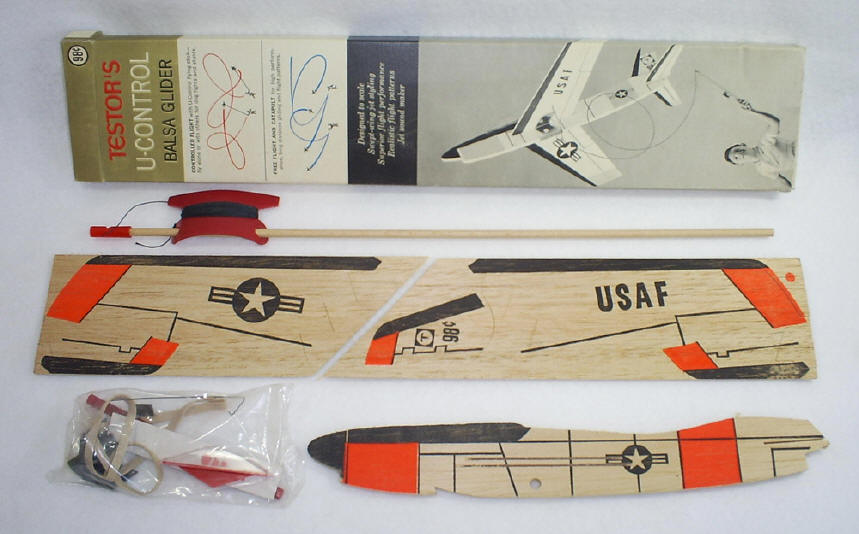All About Old Toys
|
|
Testors
Article by
Dave Pecota
|
The Testor Corporation Testors … a name synonymous with the model hobby industry for decades … was founded by Swedish immigrant Nils F Testor in 1929, when he bought the assets of a small adhesives company in Rockford (IL). The company‘s early success was based almost exclusively on the sales of “household cement” (glue). However, as early as 1936, Nils saw the bright future of the hobby industry, and the company formulated a line of model cement and butyrate dope for hobby use. As with many companies, the dark years of WW2 meant tightly controlled supplies of needed chemicals. Testor turned to other products to survive, including the manufacture of scale model airplanes made from pine wood. A fire totally gutted the factory in 1944 and almost put an end the company permanently. But with gritty determination, Nils Testor rebuilt his factory … and his company. When the demand for static pine models declined after the War, the company turned to inexpensive flying models made of balsa ... like the famous “Go Hi” toss glider. These RTF gliders were an instant success. (I personally flew countless Go Hi’s in my youth, and they remain a personal favorite of mine.) As the years went by, the company expanded its product line to include a variety of hobby cements and paints … a joint marketing venture with the makers of McCoy gas engines … and ultimately the purchase of two plastic model companies (IMC and Hawk). Alas, the balsa gliders disappeared in the 1970’s, as foam became the material of choice for these airplanes. Today, the company remains a leader in the hobby industry. |
|
“Go Hi” toss glider (ca late 1940’s) – Thought to be an example of the original Go Hi design, this terrific glider had subtle graphics, a “warm” tone to the high-quality balsa and a nicely printed box … all for 10 cents. It’s easy to understand why they were an instant hit with kids. The design appears to be based on an early F-86 Sabre jet. |
|
“Go Hi” glider pair (ca 1950’s and 1960’s) – Shown side-by-side are the next two iterations of the Go Hi design progression. The one on the left is the earlier of the two and is the version I flew in my youth. (When I pick it up, I’m instantly a LOT younger!) Note how the wood is becoming thinner and of diminishing quality from version to version, particularly on the fuselage. Cost-cutting inexorably marches on. |
|
“Go Hi” toss glider (ca 1970’s) – In this version, the glider has taken on more vibrant but simplified graphics. Bright colors had replaced decoration details. The balsa used wasn’t any thinner, but the quality of the wood had clearly diminished further. This is perhaps the last wooden Go Hi (still a decent flyer, however). The next version was made entirely of foam. Soon after, this stalwart aircraft of the glider world went out of production completely. |
|
“Go Hi” 25 cent toss glider (ca 1960’s) – The “jumbo jet” version of the 10 cent Go Hi, this large and impressive-looking glider has a 17 inch wingspan. For size comparison, it is shown here side by side with its smaller brethren before assembly. The printed graphics are particularly pleasing with its yellow striping, wing-tips and tail fin. This glider has proved to be extremely difficult to locate in complete and unflown condition … and in its original unmarked package. It took me a decade to find this example.
|
|
“Dart” catapult glider (ca 1960’s) – With its 17 inch wingspan, the Dart was probably the largest RTF glider in Testor’s product line and used a stick & rubber catapult for launch. Unlike Testor’s smaller gliders, the Dart came with steamed airfoil wings. |
|
“U-control Balsa Glider” (ca 1960’s) – Although still considered to be in the RTF category, this multi-purpose glider required a bit more assembly time than most other RTF aircraft. Undoubtedly the design was based on the bulbous-nosed F-86D Sabre jet, although it is not mentioned by name on the box. An unusual design in that it could be used as a toss glider … it could be catapult-launched using the thick rubber band … or it could be “whip-flown” by attaching it to the little pole & twine included in the kit. Using the pole, you could sling it around as fast as you dared (or until you were too dizzy to stand). |




